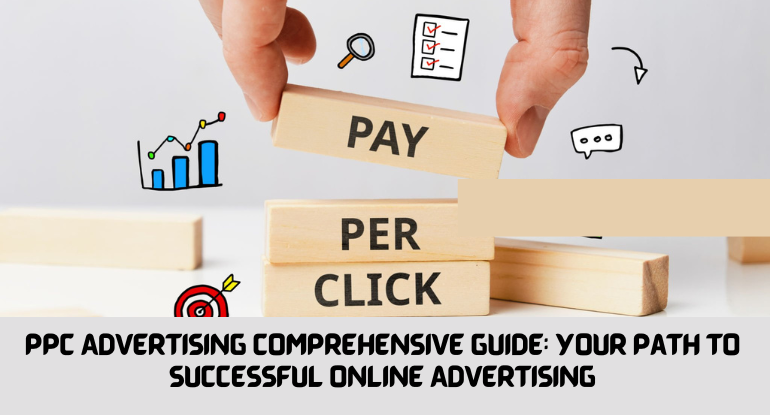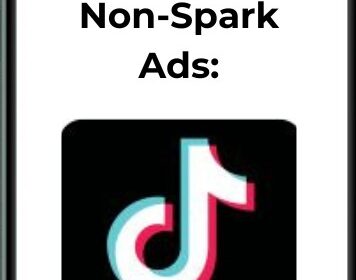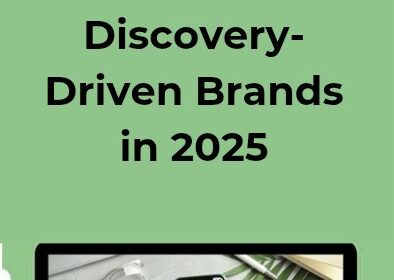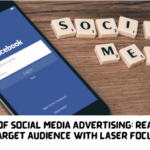In the previous post, we explored the exciting world of online advertising and its diverse landscape of channels. We highlighted the importance of aligning your advertising strategy with your specific goals and target audience. In this comprehensive guide, we’re going to delve into a particularly powerful online advertising format – Pay-Per-Click (PPC) advertising.
Imagine a scenario where you only pay when someone shows genuine interest in your product or service by clicking on your ad. This is the magic of PPC advertising! Consider it a targeted pay-as-you-go approach that allows you to reach potential customers actively searching for solutions like yours.
By strategically crafting compelling ads and leveraging powerful targeting options, PPC advertising can propel your brand to new heights, driving qualified leads, boosting website traffic, and ultimately increasing sales.
Ready to unlock the power of clicks and supercharge your online marketing efforts? Let’s hold your hand, walking you through the world of PPC advertising and explore the strategies you need to succeed!
How PPC Advertising Works: Unveiling the Click Behind the Click
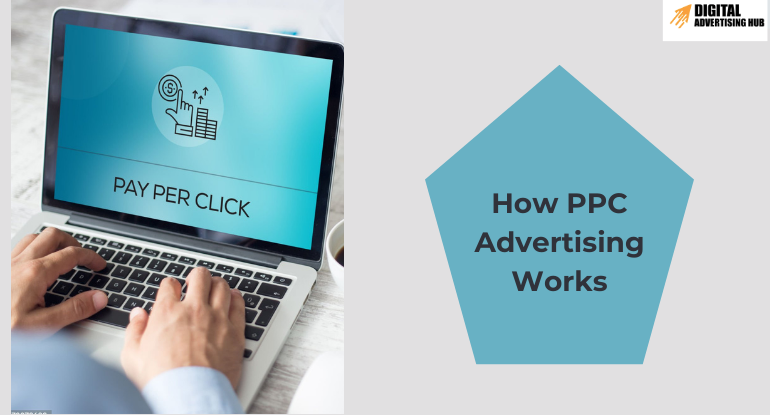
At its core, PPC advertising operates on a simple yet powerful principle: you only pay when someone clicks on your ad. This stands in stark contrast to traditional advertising methods where you pay for ad placement regardless of user engagement.
Here’s a breakdown of the basic mechanics:
#1. Keyword Research: The foundation of any successful PPC campaign lies in keyword research. This involves identifying the specific terms and phrases potential customers are using to search for products or services like yours online. By strategically incorporating these keywords into your ad copy, you ensure your ad appears when someone searches using those terms.
Imagine you own a bakery specializing in delicious homemade cookies. Through keyword research, you might discover that people in your target area often search for “best chocolate chip cookies near me” or “gourmet cookie delivery.”
Including these relevant keywords in your ad copy significantly increases the chances of your ad appearing in front of users actively seeking the kind of cookies you offer.
#2. Bidding & Auctions: Once you’ve identified your target keywords, it’s time to enter the bidding arena. PPC platforms like Google Ads operate on an auction system. Advertisers bid on specific keywords, essentially indicating the maximum amount they’re willing to pay each time someone clicks on their ad for that keyword.
The advertiser with the most relevant and well-optimized ad, coupled with a competitive bid, will have their ad displayed in the most prominent positions on the search engine results page (SERP).
Reasons to Use PPC Advertising: Why It Should Be Your Go-To Marketing Strategy
In the ever-competitive digital landscape, businesses constantly seek effective ways to reach their target audience and achieve marketing goals. PPC advertising emerges as a powerful solution, offering a multitude of benefits that can propel your brand forward. Here’s why PPC advertising should be your go-to marketing strategy:
#1. Targeted Reach: Unlike traditional advertising methods with broad reach, PPC allows you to laser-focus your campaigns on users actively searching for products or services like yours.
By strategically incorporating relevant keywords and leveraging targeting options like demographics and interests, you ensure your ads are seen by the people most likely to convert.
#2. Measurable Results: Forget about guesswork! PPC offers unparalleled measurability. You gain access to a wealth of data and insights, allowing you to track key metrics like impressions, clicks, conversions, and cost-per-click (CPC).
This data empowers you to analyze campaign performance, identify areas for improvement, and optimize your efforts for better results.
#3. Fast Results: Unlike SEO strategies that take time to yield results, PPC advertising can deliver a quicker return on investment (ROI). You can start generating clicks and website traffic almost instantly, making it ideal for businesses seeking immediate brand awareness or lead generation.
#4. Budget Control: PPC advertising operates on a pay-per-click model, meaning you only pay when someone clicks on your ad. This allows you to set a budget and have greater control over your marketing spend.
You can also adjust your bids and budget allocation based on campaign performance, ensuring your resources are focused on the most effective strategies.
#5. Increased Brand Awareness: PPC campaigns can significantly boost brand awareness, especially when targeting relevant keywords and a broad audience. Even if users don’t click on your ad initially, seeing it repeatedly can increase brand recognition and position your business at the forefront of their minds when they’re ready to make a purchase.
#6. Flexibility & Scalability: PPC advertising offers unmatched flexibility. You can tailor your campaigns to specific goals, whether it’s driving website traffic, generating leads, or boosting online sales.
Additionally, PPC campaigns are highly scalable. You can easily adjust your budget, target audience, and ad copy based on your evolving needs and marketing objectives.
#7. Competitive Edge: In today’s digital world, a strong online presence is crucial. PPC advertising empowers you to gain a competitive edge by placing your brand directly in front of potential customers actively searching for solutions.
By crafting compelling ad copy and optimizing your campaigns, you can stand out from the competition and capture valuable market share.
With its targeted reach, measurable results, and quick return on investment, PPC advertising offers a compelling solution for businesses of all sizes. By incorporating PPC into your overall marketing strategy, you can effectively connect with your target audience, drive conversions, and achieve your marketing goals.
Bidding Strategies for PPC Success: Mastering the Art of the Click
Now that we understand the foundational mechanics of PPC advertising, let’s explore the world of bidding strategies. Choosing the right bidding strategy can significantly impact the success of your PPC campaigns. Here’s a breakdown of some common approaches:
#1. Manual Bidding: This method offers a high degree of control, allowing you to set a maximum cost-per-click (CPC) you’re willing to pay for each keyword. It requires ongoing monitoring and adjustments to optimize your bids based on campaign performance.
Manual bidding is ideal for experienced advertisers who have a deep understanding of their target audience and the competitive landscape. However, it can be time-consuming and requires constant management.
#2. Automated Bidding: If you prefer a more hands-off approach, automated bidding strategies can be a valuable option. PPC platforms offer various automated bid options, such as maximizing clicks or conversions within your set budget.
#3. Target CPA (cost-per-acquisition): This strategy focuses on acquiring new customers at a specific cost. You set a target cost-per-acquisition, and the platform automatically adjusts your bids to optimize for conversions within your budget.
#4. Maximize Clicks: This option prioritizes driving as many clicks to your website as possible within your budget.
Choosing the Right Bidding Strategy:
The optimal bidding strategy for your campaign depends on your specific goals and budget. Here are some general guidelines:
#1. For brand awareness campaigns: Maximizing clicks might be a suitable strategy to get your brand name out there.
#2. For lead generation: Target CPA or manual bidding with a focus on conversion-oriented keywords could be more effective.
#3. For driving sales: Similar to lead generation, consider Target CPA or manual bidding focused on keywords with high purchase intent.
Understanding Cost-per-Click (CPC): The Currency of PPC Advertising

Cost-per-Click (CPC) is a fundamental metric in the realm of PPC advertising. It essentially translates to the average amount you pay each time someone clicks on your ad. Think of it as the cost of acquiring a click to your website or landing page.
Here’s a deeper dive into how CPC works:
Calculating CPC: Imagine your total PPC campaign budget is $100, and you receive 20 clicks on your ad throughout the day. To calculate your average CPC, you’d divide your total budget by the number of clicks (Total Budget / Number of Clicks = $100 / 20 clicks = $5). In this scenario, your average CPC for that day would be $5. You can easily make use of our free CPC calculator.
Bidding and CPC: Remember how we discussed bidding strategies earlier? The bids you set for your target keywords play a significant role in determining your CPC. By strategically setting competitive bids, you aim to secure the most prominent ad placements while staying within your budget. However, keep in mind that other factors like the quality and relevance of your ad copy also influence your CPC.
CPC as a Performance Indicator: Monitoring your CPC alongside other key metrics like impressions, clicks, and conversions is crucial for evaluating your PPC campaign’s effectiveness. Here’s why:
- Identifying Efficiency: A low CPC might indicate you’re getting clicks at a good price. However, it’s essential to ensure those clicks are converting into valuable leads or sales.
- Optimizing Bids: By analyzing your CPC alongside conversion rates, you can identify areas for improvement. If your CPC is low but conversions are scarce, it might be a sign to refine your targeting or ad copy to attract more qualified clicks.
Beyond the Average:
It’s important to understand that CPC is not always a fixed cost. Bidding strategies like manual bidding or Target CPA can influence whether you pay the exact amount you bid or potentially less. The actual cost per click can fluctuate based on various factors, including:
- Competition: If multiple advertisers are bidding on the same keyword, the cost per click can be driven up due to competition.
- Ad Rank: The position your ad occupies on the search engine results page (SERP) can also influence CPC. Generally, ads displayed in more prominent positions tend to cost more per click.
- Quality Score: PPC platforms like Google Ads assign a Quality Score to your ads based on relevance, expected click-through rate (CTR), and landing page experience. A high Quality Score can potentially lead to lower CPCs as it indicates a well-optimized and user-friendly ad.
By understanding these nuances and continuously monitoring your CPC, you can make informed decisions to optimize your bids and maximize the return on investment (ROI) for your PPC campaigns.
In the next section, we’ll shift gears and explore the art of crafting compelling ad copy that captures user attention and drives clicks in the competitive world of PPC advertising.
Crafting Compelling PPC Ad Copy: The Words That Drive Clicks
In the fast-paced world of PPC advertising, capturing user attention and driving clicks requires more than just bidding strategies. Your ad copy serves as the frontline soldier, the first impression that entices users to click and learn more about your offering. Here are some essential tips for crafting compelling PPC ad copy that compels clicks:
#1. Know Your Audience:
Always remember, your ad copy is a conversation starter directed at your ideal customer. Before putting pen to paper (or finger to keyboard), ensure you have a clear understanding of your target audience’s needs, wants, and pain points. Speak their language and address their specific challenges in your ad copy.
#2. Focus on Benefits, not Features: Don’t get bogged down listing technical features. Instead, highlight the benefits your product or service offers and how it will improve your target audience’s life.
For example, instead of simply stating “We offer organic laundry detergent,” focus on the benefit: “Experience gentle cleaning for your clothes and peace of mind for your family with our organic laundry detergent.”
#3. Keep it Clear and Concise: Attention spans online are short. Craft clear, concise, and easy-to-understand ad copy. Use strong verbs and avoid jargon or technical terms that might confuse your target audience.
#4. Embrace the Power of Keywords: While keyword stuffing is a definite no-no, strategically incorporating relevant keywords throughout your ad copy is essential. This ensures your ad appears when users search for those specific terms.
#5. Craft a Compelling Call to Action (CTA): Don’t leave users wondering what to do next. Include a clear and action-oriented call to action (CTA) in your ad copy. Whether it’s “Shop Now,” “Learn More,” or “Download Your Free Guide,” tell users exactly what you want them to do after seeing your ad.
Examples of Effective PPC Ad Copy:
Here are a couple of examples to illustrate the points above:
- Original Ad: “Looking for a reliable plumber? We offer plumbing services.”
- Improved Ad: “Clogged drains got you down? Get fast, reliable plumbing services today! 24/7 emergency repairs available. Call now!”
See how the improved ad focuses on the target audience’s pain point (clogged drains), emphasizes the benefit (fast, reliable service), and includes a clear call to action (call now).
By following these tips and tailoring your ad copy to resonate with your target audience, you can craft compelling messages that drive clicks and propel your PPC campaigns towards success.
Targeting Options for Laser-Focused PPC Campaigns: Reaching the Right Audience

In the dynamic world of PPC advertising, simply crafting compelling ad copy isn’t enough. To maximize your return on investment (ROI), you need to ensure your ads are reaching the right people at the right time.
This is where the power of targeting options comes into play. Most PPC platforms offer a diverse array of features that allow you to tailor your ad delivery to reach a highly targeted audience. Here’s a breakdown of some of the most effective targeting options:
1. Demographics: Target users based on factors like age, gender, income level, location, parental status, and more. This allows you to reach specific demographics most likely to be interested in your product or service. For example, if you’re advertising a new line of organic baby food, you might target parents of young children with disposable income.
2. Interests: PPC platforms allow you to target users based on their online behavior and interests. This can include websites they visit, apps they use, and the content they engage with. By leveraging this information, you can display your ads to users who have already demonstrated an interest in topics relevant to your offerings.
Imagine you’re promoting a fitness and nutrition app. You could target users who frequent health and wellness websites or those who have downloaded fitness tracking apps in the past.
3. Keywords: As we discussed earlier, keyword research is fundamental to PPC advertising. By incorporating relevant keywords into your ad copy and targeting options, you ensure your ads appear when users search for those specific terms. This allows you to capture users at the exact moment they’re actively seeking solutions like yours.
4. Remarketing: This powerful targeting option allows you to reconnect with website visitors who have already shown some interest in your brand. For instance, imagine someone visits your website to browse your selection of hiking boots but doesn’t make a purchase.
Through remarketing, you can display targeted ads to this user on other websites they frequent, reminding them about the hiking boots they considered and potentially enticing them to complete their purchase.
5. Similar Audiences: This feature allows you to expand your reach by targeting users who share similar characteristics with your existing customer base. PPC platforms analyze your current customer data and identify new audiences with similar demographics, interests, and online behavior. This can be a valuable tool for acquiring new customers who are likely to be receptive to your offerings.
By strategically combining these targeting options, you can create highly focused PPC campaigns that reach the right people at the right time. Remember, the more specific your targeting is, the higher the chances of attracting qualified leads and driving conversions.
Tracking and Optimizing Your PPC Campaigns: Ensuring Your Clicks Convert
The beauty of PPC advertising lies in its measurability. Unlike traditional advertising methods, PPC campaigns offer a wealth of data and insights that empower you to track performance, identify areas for improvement, and ultimately optimize your efforts for better results. Here’s why tracking and analyzing your PPC campaigns is important:
#1. Measure Campaign Performance: PPC platforms provide comprehensive dashboards and reporting tools that allow you to monitor key metrics like impressions, clicks, conversions, cost-per-click (CPC), and cost-per-acquisition (CPA). By tracking these metrics, you can gauge the effectiveness of your campaigns and identify any potential roadblocks hindering performance.
#2. Identify Winning Ads & Keywords: Analyze which ad variations within your campaign groups are generating the most clicks and conversions. This allows you to identify the most successful ad copy and keywords, allowing you to allocate more budget towards these top performers.
#3. Refine Targeting Strategies: As your campaigns run, monitor how different targeting options like demographics, interests, and remarketing audiences perform. By analyzing which segments yield the best results, you can refine your targeting strategies to reach a more qualified audience.
#4. Optimize Bids & Budgets: Based on your performance data, you can strategically adjust your bids for specific keywords or even shift budget allocation across different campaign groups. This ensures you’re maximizing your return on investment (ROI) by focusing resources on the most effective strategies.
Essential Tracking Metrics:
Here are some key metrics to prioritize when tracking your PPC campaigns:
- Impressions: The number of times your ad was displayed.
- Clicks: The number of times users clicked on your ad.
- Conversions: The number of times users completed a desired action, such as making a purchase or signing up for a newsletter.
- Click-through Rate (CTR): The percentage of users who saw your ad and clicked on it (Clicks / Impressions).
- Cost-per-Click (CPC): The average amount you pay each time someone clicks on your ad.
- Cost-per-Acquisition (CPA): The average cost of acquiring a new customer through your PPC campaigns.
A/B Testing for Continuous Optimization:
A/B testing is a powerful technique for optimizing your PPC campaigns. This involves testing different variations of your ad copy, landing pages, and targeting parameters to see which ones perform best. By continuously testing and refining your strategies based on data, you can ensure your PPC campaigns are constantly evolving and delivering optimal results.
By embracing a data-driven approach and diligently tracking your PPC campaigns, you can transform clicks into conversions and fuel the growth of your business
Conclusion
The world of PPC advertising offers a captivating blend of strategy, creativity, and data analysis. By harnessing its potential, you can propel your brand to new heights, reaching the right audience at the right time, and ultimately driving conversions and business growth.
This comprehensive guide has equipped you with the foundational knowledge to navigate the exciting landscape of PPC advertising. We’ve explored the core concepts, delved into effective bidding strategies, and unveiled the power of crafting compelling ad copy. We’ve also emphasized the importance of targeting options and meticulous campaign tracking to ensure you’re optimizing your efforts for maximum impact.
The realm of PPC advertising is constantly evolving, with new features and strategies emerging on a regular basis. Here are some next steps to consider:
- Explore PPC Platforms: Dive deeper into popular platforms like Google Ads, Facebook Ads, Instagram Ads, Tiktok Ads and LinkedIn Advertising to explore their functionalities and campaign management tools.
- Embrace Continuous Learning: The world of PPC advertising is vast. Numerous online resources, tutorials, and industry blogs can provide valuable insights and keep you updated on the latest trends and best practices.
- Start Experimenting: Don’t be afraid to experiment and refine your PPC strategies based on your learnings and campaign data.
By taking action and embracing the power of PPC advertising, you can unlock a treasure trove of opportunities to connect with your target audience, generate leads, and achieve your business objectives. So, are you ready to unleash the potential within your clicks and propel your brand forward? Start crafting your PPC strategy today and witness the power of this dynamic advertising tool!

